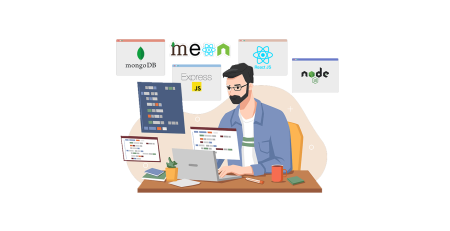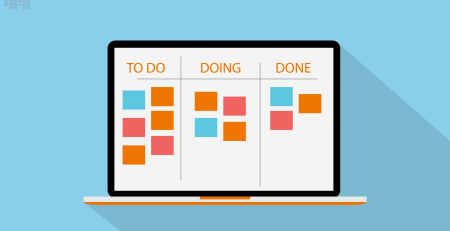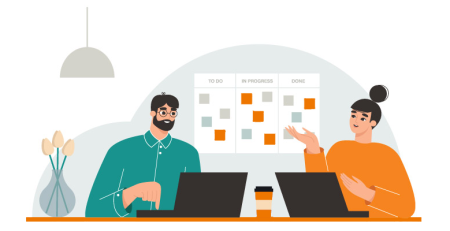How to Prepare a Project Brief for an Outsourcing Company
What exactly is a project brief for a software development company? How can it benefit your company? And how should it be written? This article contains answers to these questions.
What is the start date of a software project?
Does your project begin when a brilliant idea strikes you after hours or months of deliberation?
Should we call the beginning the moment the first user installs your app?
Any software project should begin with careful planning. Thorough planning and clear goals lay the groundwork for startup development and the creation of a product that can bring you users and recognition.
And, while a project begins with a plan, the plan itself has a starting point.
A project brief is what it’s called.
A project brief is a clear and simple description of your idea. It’s not a 50-page article that begins with childhood memories, nor is it an email that begins, “I want to build an app similar to Buffer.”
This article will assist you in navigating the planning and pitfalls that may arise at the start of your project. You’ll learn why a software project brief is necessary and what happens if you don’t create one. You’ll also learn the best structure for your brief.
This article will assist you in getting your software project off to a good start.
Let’s get this party started.
What is a project brief?
A project brief, also known as a project charter, outlines the overall concept of your project, its objectives, budget, and scope of work. A software project brief is required before you begin creating a website, developing a SaaS application, launching a spaceship, or upgrading a playground in your neighborhood. This document assists in ensuring that all project stakeholders are on the same page and understand the project’s purpose as well as the next steps to take.
Because a project brief is the very first step in your planning, the information described in it may be somewhat hazy. You may see your idea clearly and be able to describe it in detail; however, prior to the project discovery phase, when your team has yet to develop the project requirements, it may be difficult to state the scope of work clearly and precisely.
A software application project brief explains to your team what work you expect them to do.
What’s the difference between a software project brief and a software project plan?
A software project brief is typically not as detailed as a development plan. However, it is dependent on the circumstances. A project brief, for example, can become a draught for your future development plan. In another case, these two documents may be completely independent: you create a software project brief to reach out to your engineering partner, and you and your engineering partner collaborate to create a project plan or a development plan.
The purpose of a software project brief
Here are just a few advantages that a project brief for a software app may provide you and your future development partner:
Time savings
When you’re about to embark on your next project and are looking for an engineering partner or a development team capable of producing a high-quality app, time is of the essence.
You contrast different offers, services, and prices. You speak with representatives from the development team, and on each call, you say the same thing, describing what you want to build and how.
A software project brief can save you countless hours of work. You can send it to a potential offshore software development partner for an estimate, which you can then compare to your budget and expectations.
When you shorten the time it takes from first contact to agreement and project start, you also shorten the time to market.
Maximum understanding
When you’ve just had an idea, you don’t have a project brief. So you contact a potential partner and explain your expectations and requirements verbally. During this conversation, the person you’re speaking with may overlook important information, dismiss minor details, or fail to grasp the context of your entire idea.
All of this is laid out in a project brief for a software app, which is a digital document rather than a written document. You can always return to this document to ensure that your partner understands your concept.
Fast development cost estimate
How much money do you need to put into your app? No developer in the world can give you a price before they know what you expect. You can get an answer to this question in a matter of hours if you use a software project brief.
A brief is an effective communication tool that begins to work even before communication begins. You can send it to your potential partner even before the first call, saving time and energy on a discussion that will not result in a successful partnership.
When a partnership begins, your brief serves as the first whiteboard, assisting all stakeholders, managers, designers, and engineers in understanding the key characteristics and goals of the project.
Can I skip the project brief for software app?
You can begin a software project without a project brief if you intend to develop it yourself or if you have a long-standing relationship with an internal engineering team.
But, before you do so, familiarize yourself with some of the potential consequences:
- Missed deadlines
A brief provides an overview of the project. Developers can use it to provide you with rough estimates and explain how much time it will take to bring your idea to life.
It’s difficult to evaluate the scope of work and set an approximate release date without a project brief — a description of your project and its goals.
- Unsatisfied expectations
There’s a chance that the product you describe and the product your team envisions are two entirely different things. You can never be certain that the outcome will match your expectations unless you write down your vision.
- Wasted time
Without a software project brief, you and your engineering team can get by and even build a prototype to test your idea. However, it may take several weeks before you realize that the prototype does not accurately represent your idea, and you may need to start from scratch.
The resulting delay in product release could cost you your entire business. Continue reading to learn how to create an informative project brief for a software app to mitigate this risk.
Preparing to create a project brief
Take your time, grab a cup of coffee, and answer a few questions to define your product’s purpose, growth, and success before you begin project development.
Begin by getting some ideas from a TedTalk by Simon Sinek. He explains the Why?, How?, and What? framework, which can assist you in making the right decisions and propelling your business forward from the start.
- Start with Why?
Why do you want to create this product? Is there a clear void in the target market? Do customers inquire about this product or its specific features?
“People don’t buy what you do; people buy why you do it,” says Simon Sinek.
- Proceed with How?
What methods, approaches, and tools might be useful in achieving your objectives? How do you intend to construct your product?
The how-to questions may be difficult to answer. It may be easier for you to respond to them in collaboration with a co-founder with a technical background or with your engineering partner.
- Get answers to What?
You can see what you should build once you know why you want to pursue your goals and how to turn your idea into a real application. You can imagine the product’s design and even make a list of key features.
The Why? – How? – What? framework can lead you to more precise questions:
- Why did you decide to build this product?
- How did you identify a need for your product?
- What primary goal would you like to accomplish with this product?
- How many resources, including time and money, do you have at your disposal?
- When would you like product development to start? What is the expected release date?
- What metrics will reflect performance and progress?
- Who will build this project for you? Do you want to work with a single freelancer or with a development agency?
- Would you like to establish a long-term partnership with a development team?
5 principal elements of a project brief
A brief does not have a one-size-fits-all structure. Different companies use different templates; each project is unique and may necessitate the addition of additional elements to the brief.
However, there are five main sections that must be included in every project brief.
1.Company profile
Tell us about yourself and what you do. Tell us about your company and the industry you work in. To help readers and potential partners understand you and your mission, describe brand details and even mention some of your competitors.
2.Project overview
Describe your project by answering the questions Why? How? and What? Make a list of everything you can think of about your idea, vision, plans, and even design.
Ask yourself if there is anything specific your team should know about this project before it begins development. Provide context and examples to ensure that you and your brief’s readers are on the same page.
3.Project objectives
George T. Doran wrote a paper about the SMART way to write objectives for Management Review in 1981. The acronym SMART stands for the following essential features of management objectives:
S.M.A.R.T for product development
S – Specific
M – Measurable
A – Achievable
R – Relevant
T – Time-bound
These days, SMART has been adapted for a modern management approach:
Alternative S.M.A.R.T for product development
S – Strategic and Specific
M – Motivating
A – Assignable, Agreed, Action-oriented, Attenable and Achievable
R – Realistic, Resourced, Reasonable and Result-based
T – Trackable, Time-based, Time-oriented
Set SMART objectives for your project and include them in your brief.
4.Target audience
For whom are you developing your product? Can you imagine your future product’s actual user? Or do you base your decisions on data and have analytics that show who will use your app?
Define basic information about your app’s users, such as their age, gender, location, primary interests, and education or background.
5.Time frame and budget
Set a deadline. When do you want your app to be live and available in the App Store and Google Play? Can you give me a deadline?
Break your project down into milestones to set a realistic deadline. For example, consider the following key milestones:
| Phase | Minimum duration | Deadline |
| Project discovery and documentation development | 4–6 weeks | |
| Design | 4–8 weeks | |
| Prototype | 4 weeks | |
| MVP development | 6–9 months | |
| Bug fixes and project upgrades | 4 weeks |
The first version includes all of the aforementioned phases and may take up to a year to complete from the start of project discovery.
The following is an estimate of the project’s completion date:
Please keep in mind that this table is only an example based on our own experience. You must consult with your development partner to determine a release date for your application. You can only describe desired dates and your available budget in this section. Following a discussion with your development partner, you can later add details and more accurate data.
6.Success metrics
Your efforts should result in a measurable outcome. What factors will determine the future success of your project? In this section of your brief, consider how to quantify your goals and provide your vision.
Once you’ve included these elements in your software project brief, you’ll have a preliminary version of your project plan.
What comes next?
You can send your project brief to every company you’re thinking about working with as a potential development partner. Companies can evaluate and estimate the time and cost to develop your project based on your brief, and provide you with their forecasts and assumptions. You can select the potential partner who best meets your needs and expectations from a long list of options.
A project brief will assist you in finding a dependable development partner for long-term collaboration.
You and your development partner can work together to improve your project brief for software app to make it a powerful document that will help you move forward with further planning and documentation development.













Leave a Reply